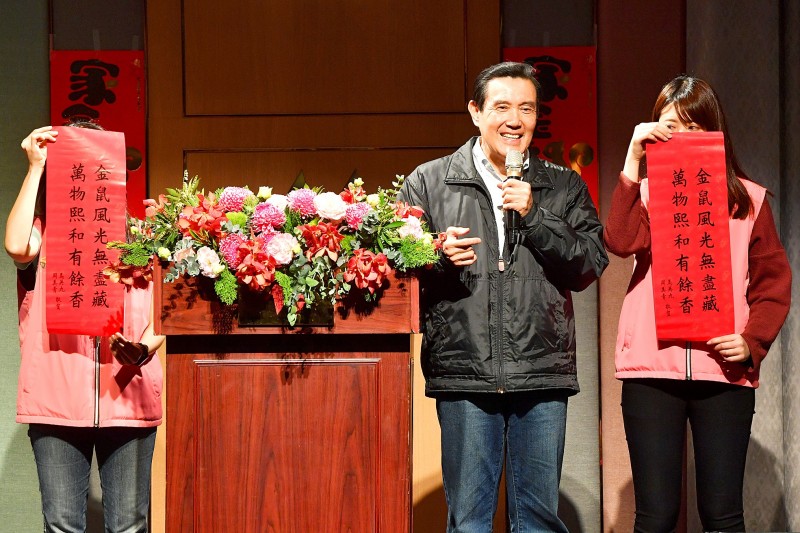《TAIPEI TIMES》 China skewed ‘1992 consensus,’ Ma says

Former president Ma Ying-jeou speaks at an event in New Taipei City’s Sanchong District yesterday. Photo: CNA
By Yang Hsin-hui and Jake Chung / Staff reporter, with staff writer
China has to take responsibility for skewing the so-called “1992 consensus,” former president Ma Ying-jeou (馬英九) said yesterday, adding that Beijing omitted “different interpretations” and only focused on “one China.”
Ma made the remarks when asked about discussion within the Chinese Nationalist Party (KMT) following its losses in the Jan. 11 presidential and legislative elections about whether the party should improve or abandon the “1992 consensus.”
The “1992 consensus” — a term that former Mainland Affairs Council chairman Su Chi (蘇起) in 2006 admitted making up in 2000 — refers to a tacit understanding between the KMT and the Chinese Communist Party that both sides of the Taiwan Strait acknowledge that there is “one China,” with each side having its own interpretation of what “China” means.
“Both Taiwan and the Mainland have agreed to the consensus — otherwise, there would be no consensus. I think everyone misunderstands the consensus. It is, of necessity, a Taiwanese consensus and also one across the Taiwan Strait — only then would it have any effect,” Ma said yesterday.
The “consensus” benefits Taiwan by offering it flexibility and echoing the “one China” principle as stated by the Republic of China (ROC) Constitution — both of which enable cross-strait interaction, Ma added.
“I think the Mainland has to take certain responsibility for the misunderstanding, as it has placed too much emphasis on ‘one China’ and forgets there is the component ‘each side having its own interpretation,’” Ma said, adding that not clearing up the matter would make cross-strait relations increasingly difficult.
In a related development, KMT Youth League head Hsiao Ching-yan (蕭敬嚴) on Friday proposed that the party should move away from pro-unification discourse.
Taiwanese have “achieved consensus in refusing to acknowledge the legitimacy of the 1992 consensus,” Hsiao said in an interview with the China Review News Agency, adding that the party should find a new consensus, one that is anti-unification.
While acknowledging that his view was similar to the Democratic Progressive Party’s (DPP), Hsiao said that, based on his observations, any variation of the “1992 consensus” — as long as it contained the same “one China with separate interpretations” spirit — would likely be rejected by Taiwanese.
Hsiao added that his observations showed that Taiwanese agree with three concepts: “the ROC is in Taiwan,” “independent sovereignty should not be violated” and “unification should be adamantly opposed.”
Given this, Hsiao urged the party to base its cross-strait discourse on these three concepts.
However, KMT Central Advisory Committee member Chang Ya-ping (張雅屏) slammed Hsiao’s suggestion.
The KMT is “the defender of the ROC” and the Constitution is the “Constitution of the ROC,” which supports the “one China” ideology, Chang said.
The KMT must defend the Constitution and becoming anti-unification is to “deny the legitimacy of the ROC Constitution,” he said, adding that any person who refuses to defend the Constitution should resign from the KMT.
An Internet user said that it was perplexing that such a good idea from Hsiao — one that could win the party votes from the younger generation — should be met with such hostility by the party’s leadership.
Pro-unification supporters in the KMT should leave Taiwan, another netizen said.
新聞來源:TAIPEI TIMES



















